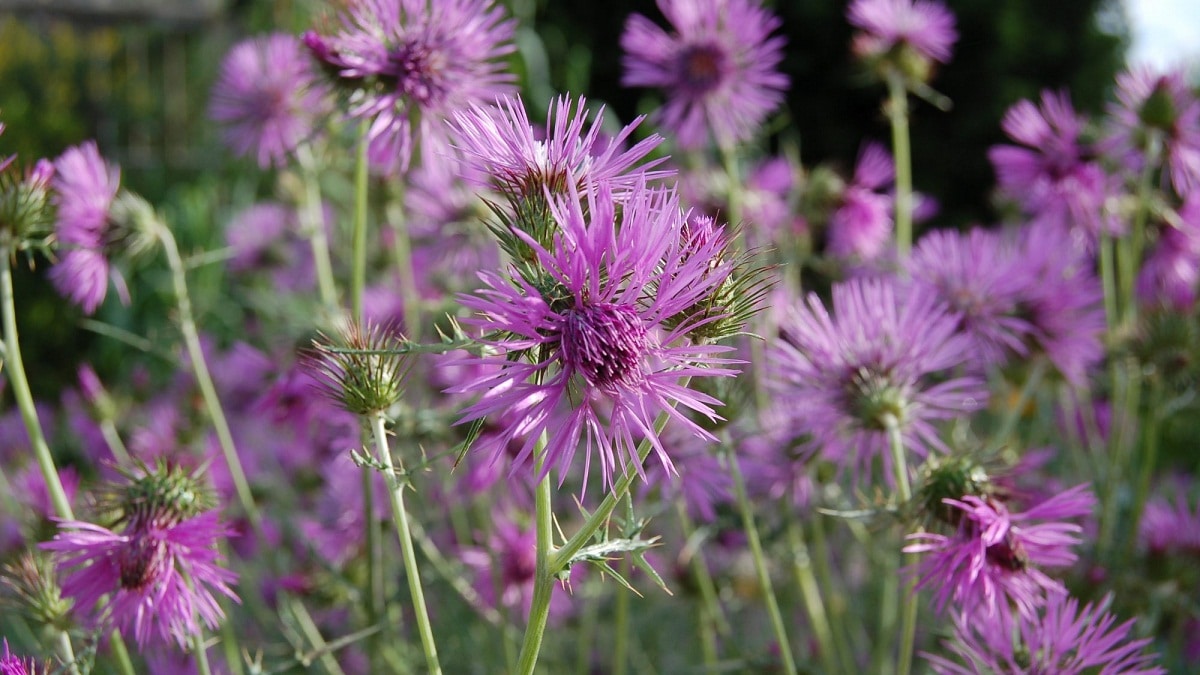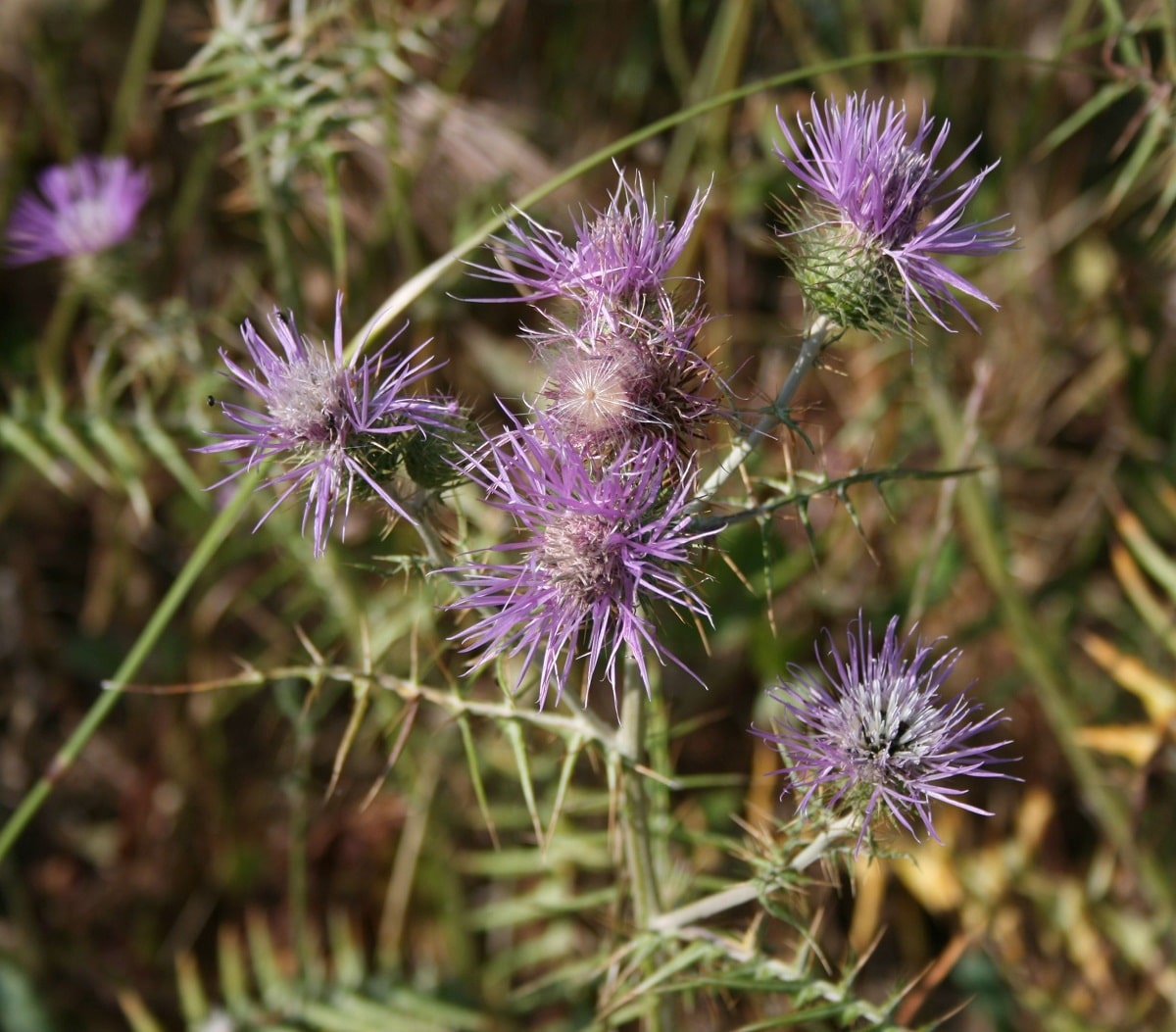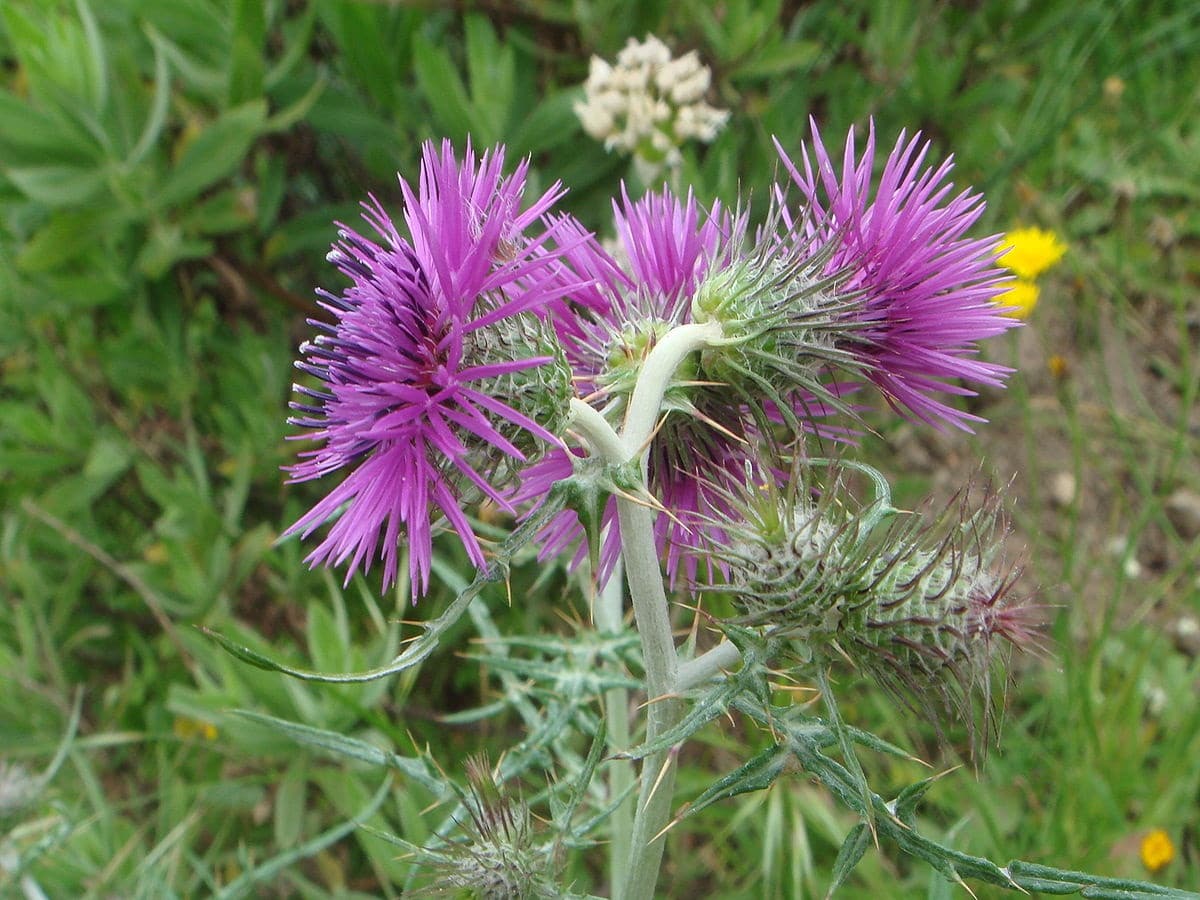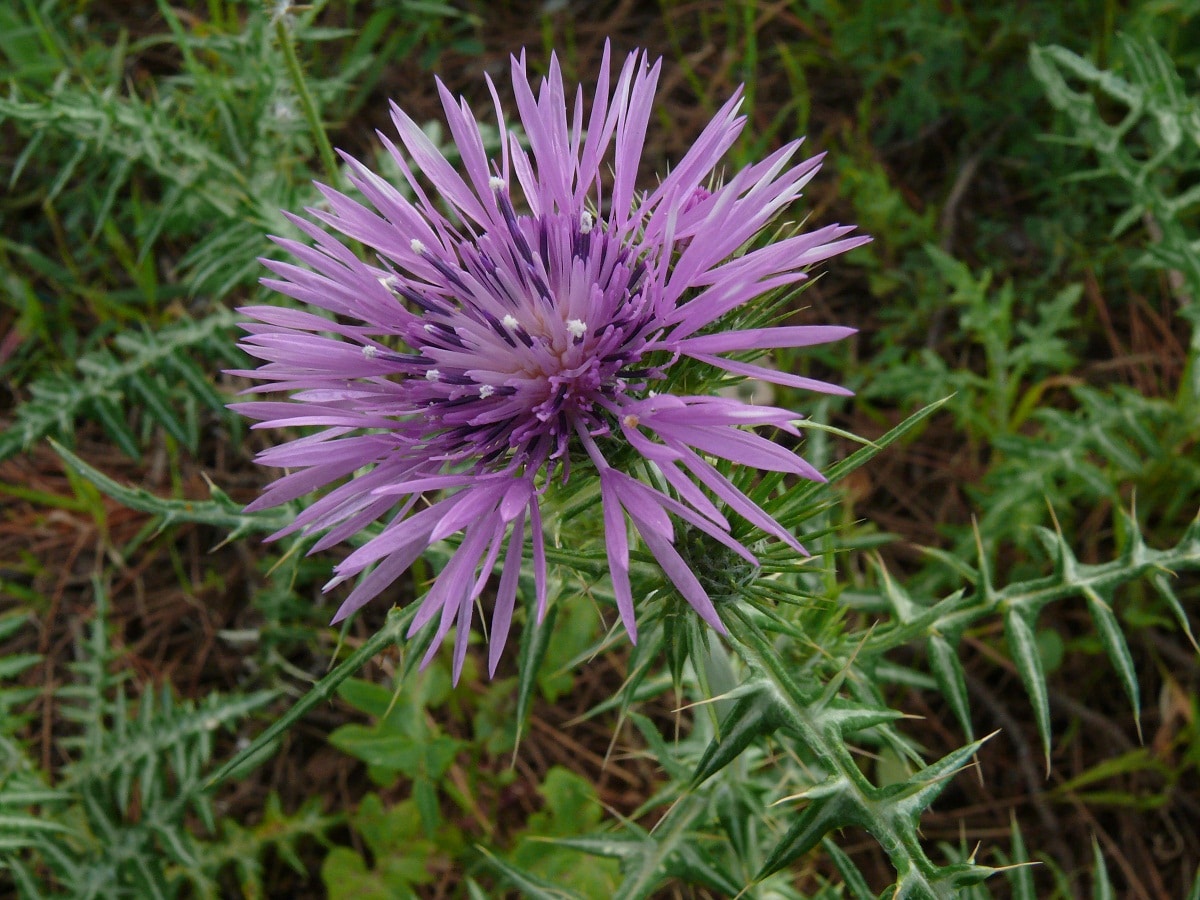
Among all the large number of thistles found in our flora, one of them is the Galactites tomentosa, which is a herbaceous plant that has many uses, since it is the owner of an important ornamental beauty, which makes it very common in garden crops.
A herbaceous plant that you will find naturally in the European Southwest area and that you will see in its maximum flowering in summer, it also has certain characteristics that make it a plant for medicinal use.
Features Galactites tomentosa

In this article we will tell you all about the Galactites tomentosa and we will teach you what its cares are, in case you want to cultivate it for give more beauty to your outdoor space.
When we refer to this plant or as it is also called, cardota, we refer to one species of the many that exist in annual herbaceous plants. It is part of the family of asteraceae plants, which in their entirety are found within the Mediterranean areas.
The term tomentosa that bears in its name, It refers to having a tomentum, which has a whitish color and it represents one of the most particular characteristics of this plant, which is why its term galactites also refers to this, since it is a generic name that derives from a Greek word that means "milk".
The cardota represents a grass that can be seen naturally, close to urban areas and roads, but it is also often used for the ornamental beauty that presents the colorful tones of its inflorescences.
As we mentioned before, this type of plant is herbaceous and generally has a very short stature, which can be found in 50 centimeters, although there are also usually specimens closer to one meter in height, between approximately 70 and 80 centimeters.
It is a plant that shows an erect stem and many branches. Regarding its leaves, their shapes vary according to where they grow on the stem. In the basal part and even in the first complete third of the stem, the leaves will be pinnatisect, although specimens from different places are also known that have demonstrated other characteristics of basal leaves.
These characteristics they can be a quasi-toothed shape and even whole, but these specimens are usually also smaller plants, with a stem that did not exceed 40 centimeters.

These differences between the leaves of the different specimens have to do with a particular expression of the development of the plant, which may have been subjected to growing in unfavorable conditionsThis is why they show certain traits of weakness.
In what has to do with the involvement, it comes in a spherical to ovoid shape, showing bracts that are arranged in about six series that will increase in size from the inside to the outside.
Its apical spine can be about 5 millimeters, except for those that are more internal, which have a scarious apex and usually appear in a rather pinkish color.
This type of plant has florets with a corolla that also shows a pinkish hue, although in its tube this tone is gradually losing and clarifying. This corolla also can be seen in colors between lilac and purple, and that is why it is a very popular plant to be used ornamentally in all types of gardens.
They usually present some spots along somewhat darker colors and features a prominent central nectary and the vilano of a white color, possessing between two and three rows of hairs in the form of feathers that are fused to a circular base.
Distribution and habitat
Regarding their distribution on the planet, we know that the Mediterranean area is the place where they are found in the greatest quantity, being of a great presence in all areas, both from the western part of this ocean and the part of the Canary Islands.
It is a herbaceous plant that can be seen in different types of places. It is very common in wastelands and also in dumps., as well as on slopes and roadsides in general.
During the colder months of the year they can even go unnoticed in the bushes, but towards spring and until summer begins, we will see the development of its flowers, which with its color will make it become more notorious even in areas that are very strongly altered.
Care
As we mentioned before, they are both the slopes of roads and edges of roads or fields, as well as the dumps, the places where most of the Galactites tomentosa.
It is a plant that to develop better can be in direct contact with the sunIt will even grow very well in a semi-shade setting, but it will never grow well indoors where exposure to light is absent for a portion of the day.
In what has to do with the soils, the cardota needs soils that represent a certain depth and that are sufficiently loose to allow greater drainage.
When you are in the first phaseIn the middle of the planting season, the soil must be kept in constant humidity for it to develop, so constant watering will be necessary. This means that to grow in a healthy way, it must have conditions similar to those that these types of places usually present.
When you can harvest and after harvesting the leaves, you will have to wait for them to bleach. This can take between 20 days and 1 month after collection., when the summer ends or during the fall and winter months, depending on the variety you find.
This has the characteristic that it is very beneficial in plantations of other types of species. For example, if you grow it in places where there are fields of broad beans, these will help provide a large amount of nitrogen to the ground for a better development of these vegetables. They also play an important role in the growth of different types of thistles.
Medical uses

It is considered a medicinal plant that has a positive influence on the treatment of gastrointestinal spasms, hepatobiliary disorders and hypertension, among several other problems of the body. In these cases it is usually ingested as an infusion that should have a proportion of one tablespoon of plant in each cup of water.
It is also used topically, for the treatment of dermal ulcers, all kinds of bites, wounds of different types, conjunctivitis and dermatitis. In this case, certain topical creams usually use extracts of Galactites tomentosa for your preparations.